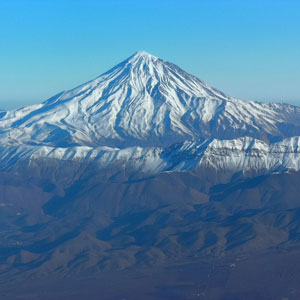 Signin with Google
Signin with Google Signin with Facebook
Signin with Facebook
 Places,History
Places,HistoryBehistun, the Rosetta stone of Persia

At the doorstep of Kermanshah city in western Iran, a gigantic rocky gateway navigates to Iranian civilisation. The oldest known human remains in Iran found here and the most powerful kingdoms engraved their legacies over its bed for an unpredictable time.
The UNESCO-World-Heritage site of Bisotun, located on the hillside of Behistun Mountain raised above the plain. It held the worldwide profile carved on its face: the world's most immense carved bas relief and the only known monumental text of the Achaemenids by Darius the Great.
The main panel of the Bisotun inscription is illustrated as a historic event by the life-sized bas-relief. Darius the Great standing on the pretender to the kingdom whose assassination led to his reign while in front of him eight rebels tied up in a raw.
Darius The Great's power depiction on the stone
There is a story that visitors come to admire on the archaeological site of Behistun. Here, in the rocky slope of the mountain, is an impressive bas-relief carved into the stone, accompanied with cuneiform inscriptions. This historical masterpiece has been ordered by Darius the Great when he rose to the throne of Persia in 521 BCE.
The scene is a declaration of the legitimacy of Darius's claim to Cyrus the Great's throne. It depicts a powerful king stepping on his adversary and putting down rebellions in its kingdom. The best craftsmen of the kingdom gathered to Behistun to carve this scene 100 meters above ground level. He begins with the biography of him and his ancestry and the claim on the throne as the most rightful heir of Achaemenids.
Standing on the pretender to the kingdom, Darius the Great disgraced the liars. This massive bas-relief overlooks the valley, not only addressing Darius' message to its subjects but also as if expressing its supremacy directly to the god Ahuramazda himself.
The Rosetta stone of Persia
Below and around the Bisotun bas-relief, the great Persian king left an incredible message to humanity. Carved into the rock, are not less than 1200 lines of inscriptions, recalling the success of its military campaigns, and thus, establishing its right to rule. It's the only known monumental text created by the Achaemenid Empire, a treasure for archaeologists and historians.
This text evokes the Egyptian's Rosetta stone, as it also has the feature of being written in three different languages: Elamite, Babylonian, and Old Persian. As for the Rosetta stone, scholars were able, in the mid-19th century, to decipher the cuneiform writing of the Mesopotamian, one of the earliest systems of writing in the world.
The Persian tale of love depicted on the stone walls
It's in the scenery of the lush Mount Behistun that took place part of the famous Persian story of Khrosrow and Shirin. This tragic romance poem that features in Shahnameh epic book by Ferdowsi recalls the love of the Sasanian king Khrosrow II for an Armenian princess called Shirin. To get rid of one of his rivals, a sculptor named Farhad in love with Shirin, Khrosrow sent this latter in exile in Mount Behistun. To be allowed to marry Shirin, Farhad had to carve stairs into the mountain which he did. However, informed by the false news of Shirin's death, Farhad took his own life on top of Mount Behistun and connected the most tragic legend of Persia to the Bisotun heritage site.
Farhad Tarash is the smoothed rock surface that was made for carving an enormous relief that has never been completed in the Sassanid time. Now as a memoir of the persistence, the imposing wall hosts annual rock-climbing competitions.
Tracks of the Safavid and Seleucid Empires
All along the ancient trade road, next to Darius' bas-relief and Behistun inscription, were found many other remains and inscriptions, making this site an invaluable testimony of ancient history. The Statue of Hercules is another important monument, which testifies to a time when the Greeks ruled over the region, fierce rivals of the Persian Empire. Close by, a well-preserved caravanserai dating back from the Safavid era, reminds the visitors that he stands on the path of one of the most famous and essential trading roads in history.


